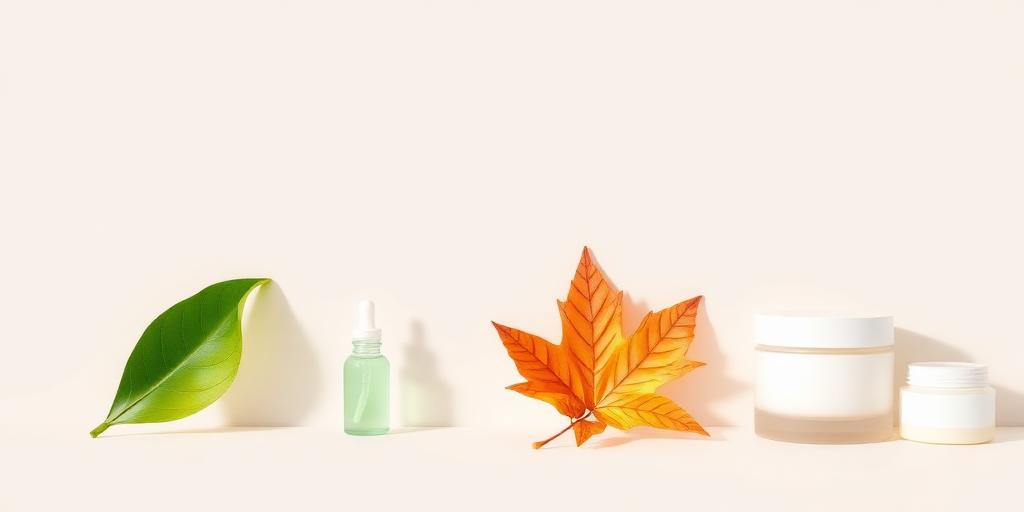The efficacy of a skincare routine is intrinsically linked to its adaptability to environmental shifts. As seasons change, so too do the needs of our skin. Humidity levels, temperature fluctuations, and sun exposure vary dramatically throughout the year, necessitating a strategic evolution in your skincare regimen to maintain optimal skin health and appearance.
Understanding Seasonal Skin Responses
Our skin is a dynamic organ, constantly reacting to its external environment. In warmer, more humid months, skin tends to produce more sebum, making it prone to oiliness and breakouts. Conversely, colder, drier air depletes the skin's natural moisture, leading to dryness, flakiness, and a compromised barrier function. Recognizing these physiological responses is the cornerstone of an effective seasonal skincare transition.
Spring: Embracing Renewal and Protection
As winter's chill recedes, spring ushers in increased humidity and more sun exposure. This is the ideal time to shed the heavier formulations of winter and prepare your skin for the warmer months ahead. The focus should be on gentle exfoliation and enhanced sun protection.
- Lighten Up: Transition from rich, occlusive creams to lighter lotions or gel-creams. This prevents pore clogging as oil production naturally increases.
- Gentle Exfoliation: Reintroduce or increase the frequency of mild chemical exfoliants (like AHAs or PHAs) to remove dull, dry winter skin. This promotes cell turnover and enhances product absorption.
- Incorporate Antioxidants: Boost your routine with Vitamin C serums to brighten the complexion, protect against environmental damage, and prepare for increased UV exposure.
- Consistent SPF: Elevate your daily SPF to at least 30, even on cloudy days. Sun protection is paramount as UV intensity rises.
Summer: Prioritizing Protection and Oil Control
Summer demands a robust defense against intense UV radiation, heat, and humidity. The primary objectives are to prevent sun damage, manage excess oil, and maintain hydration without overburdening the skin. Summer skincare essentials revolve around lightweight, non-comedogenic formulations.
- Higher SPF: Opt for a broad-spectrum SPF 50, reapplying every two hours, especially if active outdoors. Mineral sunscreens are often preferred for sensitive or acne-prone skin.
- Lightweight Hydration: Swap heavy moisturizers for oil-free or gel-based formulas. Hyaluronic acid serums are excellent for attracting and retaining moisture without feeling heavy.
- Oil Control: Incorporate ingredients like niacinamide or salicylic acid to help regulate sebum production and minimize breakouts. Clay masks can be beneficial for deep cleansing.
- Antioxidant Reinforcement: Continue with antioxidants to neutralize free radical damage caused by sun and pollution.
Autumn: Repairing and Replenishing
After summer's stresses, autumn is a critical period for skin repair and preparing for the colder months. The goal is to address any sun damage, restore the skin's barrier, and begin incorporating richer hydrating elements. Fall skincare changes often involve a subtle shift back to more nourishing textures.
- Barrier Support: Introduce ceramides, fatty acids, and cholesterol to strengthen the skin's natural barrier, which may have been compromised by sun exposure or dryness.
- Gentle Cleansing: Use hydrating, non-stripping cleansers to avoid exacerbating any dryness.
- Targeted Treatments: Consider incorporating retinoids (if not already in use) to address sun spots and fine lines, starting gradually.
- Hydration Boost: Reintroduce slightly richer moisturizers and consider adding a hydrating serum with ingredients like glycerin or polyglutamic acid.
Winter: Intense Hydration and Protection
Winter presents the most significant challenge to skin hydration due to cold temperatures, low humidity, and harsh winds. The focus must shift to intensive moisturization, barrier protection, and soothing irritation. These skincare tips for winter dryness are crucial for maintaining skin integrity.
- Rich Moisturizers: Transition to thicker, occlusive creams and balms that create a protective layer to lock in moisture and shield against environmental aggressors.
- Facial Oils: Incorporate nourishing facial oils (e.g., squalane, argan, jojoba) as the last step in your routine to seal in hydration.
- Humidifiers: Utilize a humidifier indoors to add moisture to the air, directly benefiting your skin.
- Gentle Cleansing: Continue using creamy, hydrating cleansers. Avoid hot water, which can strip natural oils.
- Lip and Hand Care: Do not neglect these vulnerable areas. Use rich lip balms and hand creams consistently.
General Principles for Adjusting Your Skincare Routine
Regardless of the season, a few overarching principles should guide your adjusting skincare routine for weather changes:
- Listen to Your Skin: Pay close attention to how your skin feels and reacts. Dryness, oiliness, breakouts, or sensitivity are all indicators that your routine may need modification.
- Gradual Changes: Avoid overhauling your entire routine at once. Introduce new products or textures incrementally to allow your skin to adapt.
- Patch Testing: Always patch test new products, especially potent ones, to prevent adverse reactions.
- Consistency is Key: Even with seasonal adjustments, consistent daily care remains fundamental to skin health.
By proactively adapting your skincare routine to the demands of each season, you can ensure your skin remains balanced, healthy, and resilient year-round. This informed approach to skincare is not merely a trend, but a fundamental practice for long-term dermatological well-being.









